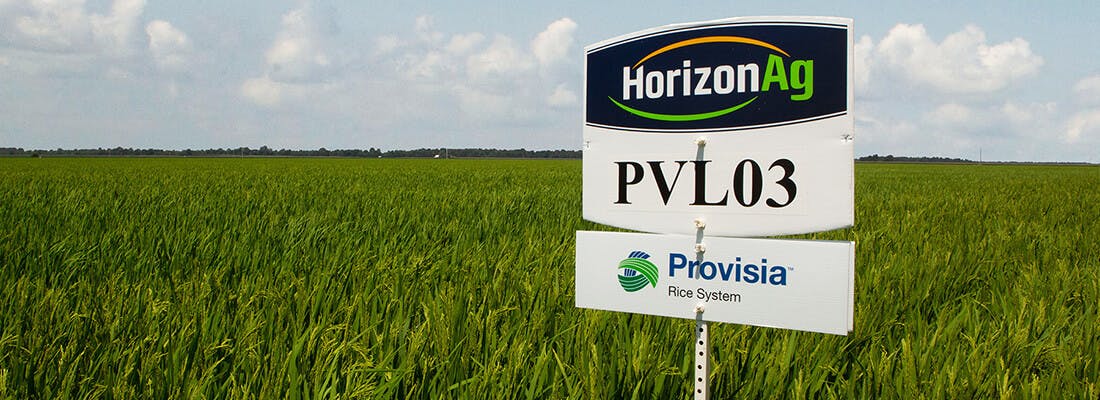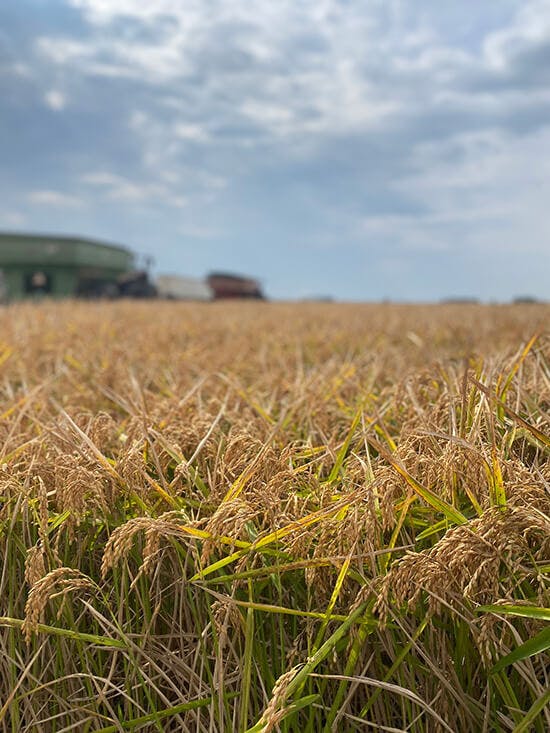Maximizing Results with Provisia Rice
By Scott McClure
The release of elite Provisia rice varieties like PVL03 in recent years and new PVL04 is driving increased interest in the Provisia Rice System as an important tool to control weedy rice and resistant red rice and grasses, as well as to rotate with Clearfield rice to extend the effectiveness of both technologies.

PVL03, bred by LSU AgCenter rice breeders, was the #1 planted rice variety in Louisiana this past season. In 2024, it will be joined by new PVL04 from the University of Arkansas rice breeding program.
As Provisia acres expand, industry leaders continue to study ways to help farmers steward the technology to prevent the development of resistant weedy rice outcrossing and use best management practices to maximize yield and profit potential.
Going into the 2023 season, Horizon partnered with university and other industry leaders, to help farmers best manage the Provisia Rice System. The practices that were communicated resulted in significantly fewer confirmed instances of weedy rice outcrossing than the previous year.
Ahead of 2024, Horizon asked university and extension rice experts to again weigh in on management practices to maximize results with Provisia rice.
LSU AgCenter rice breeder Dr. Adam Famoso noted that the management requirements of the Provisia Rice System differ some from the Clearfield Production System for Rice. Stewarding both weed systems is critical since new technology is likely years away.
“The Provisia system with Provisia herbicide is an excellent tool and will likely be the only tool of this type available for the foreseeable future,” says Dr. Famoso. “It is not as forgiving as the Clearfield system and Newpath herbicide, however, and will require more effort and attention to make it last.”
Planting
Provisia variety PVL03, in its second year of commercial production, was the most widely grown variety in Louisiana, planted on about a third of the state’s long grain rice acreage. “PVL03 yields were very solid this year and the Provisia herbicide system resulted in great weed control and one of the cleanest red rice-free crops we’ve had in many years,” Dr. Famoso says.
Getting the crop off to a strong start is important. Dr. Famoso recommends farmers plant early to maximize yield potential and mitigate disease, using a 55-60 pounds per acre seeding rate for PVL03, considering planting and spraying environments when determining the rate.
“Assume lower seeding survival rates during early planting and more herbicide injury/death due to weather,” he adds. “Too low of a stand will also impact the second crop, probably more than the first crop. Keep a healthy, actively growing crop and flush when needed.”
Those recommendations were echoed by Dr. Ronnie Levy, LSU AgCenter rice specialist, who added, “Based on our experiences, we recommend farmers plant early within the recommended planting dates.”
Plant Health
Monitoring and protecting plant health is also important when it comes to minimizing the risk of adverse impacts from the environment or herbicides in Provisia rice. Critical practices include using a recommended seed treatment, making timely fertilizer applications, and monitoring for disease threats to keep plants growing and healthy from the start.
Famoso says farmers should avoid being late on nitrogen applications that might limit plant vigor or tillering. Levy recommends farmers not apply herbicide to “any rice that is showing bronzing, cold stress, or nutrient deficiency. Wait until the health problem has been addressed and the rice is healthy.”
Weed Management
The Provisia Rice System has consistently proved its ability to result in clean fields and control costly weedy rice and red rice. Still, industry specialists say there are management practices farmers can implement to minimize the potential for herbicide antagonism and prevent outcrossing. These include
- Taking steps in the fall to control weeds and limit early competition in the coming season, like applying a residual burndown grass herbicide or using tillage.
- Holding off on making the first application of Provisia herbicide until the temperature is 65 degrees or above for three consecutive days.
- Letting the size and population of weedy rice dictate follow-up applications, with an emphasis on spraying actively growing grasses, red rice and volunteer rice.
- Making three applications of Provisia herbicide at 10.5, 10.5 and then 10 oz. per acre versus two applications at the higher labeled rate of 15.5 oz. each.
- Having at least one Provisia herbicide application after the field is flooded
- Using proper carrier volumes for ground and aerial applications.
- Practicing “zero tolerance” for weedy rice and red rice escapes.

PVL03, bred by LSU AgCenter rice breeders, was the #1 planted rice variety in Louisiana this past season. In 2024, it will be joined by new PVL04 from the University of Arkansas rice breeding program.
Famoso adds that spray volume can directly impact coverage, with low volumes more likely to result in skips. “That doesn’t mean the low volumes will never work and high volumes will never have skips, but the probability is greater,” he said. “If there is good application coverage, there should be few escapes.”
If escapes do occur, Dr. Levy says removing the threat is essential. “There should be zero tolerance for weedy rice and red rice escapes. We need to spot-treat any escapes, using drones if necessary.”
